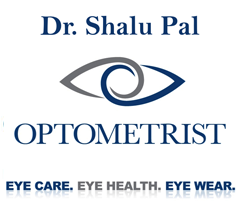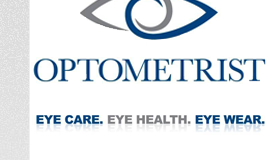Congenital Esotropia
Esotropia refers to the inward turning of the eye toward the nose. The term for misaligned eyes of all types is “strabismus.” A misalignment that is present all the time is constant; when present only part of the time it is intermittent. In some cases of esotropia the same eye always does the deviating while in others the eyes may alternate. Alternating esotropia can be quite confusing to parents trying to figure out which eye is the straight eye.
Strabismus may be caused by the unequal pulling of muscles on one side of the eye or paralysis of the ocular muscles. Some newborns appear to have crossed eyes due to a lack of developed vision but this disappears as the child grows. True strabismus does not disappear.
The true infantile or congenital esotropia is a large turn of the eye(s) which is easily noticed. Congenital esotropia is the most common form of childhood strabismus; although the name implies that estropia is present at birth in many cases it develops within the first six months of life. It is well recognized that congenital esotropia persisting through six months of age rarely if ever resolves spontaneously and therefore requires surgical correction. This condition occurs in one to two per cent of children and the cause is unknown. It is thought however that the problem is the brain’s inability to coordinate the movement of the eyes (which are themselves completely normal).
What Should I Do if My Child Has Congenital Esotropia?
Children do not outgrow this condition. Before surgery is performed other factors must be considered. If amblyopia (“lazy eye”) has developed in one eye this poor vision must be treated right away. This is accomplished by patching the better eye to force the brain to use the eye with poorer vision. Though this will not correct the eye crossing it will equalize the vision which improves the prognosis for a successful outcome from surgery. The presence of farsightedness must also be detected prior to an operation.
Eye care practitioners usually recommend surgery on children between six and 14 months of age. Older children with congenital esotropia need both surgical intervention and vision therapy if the turn is large. Though it may sound like a drastic measure there are many benefits to the surgery:
- There will be an immense improvement in your child’s physical appearance resulting in increased confidence as he/she grows older.
- If the surgery is not done “binocular vision” (the ability of the brain to use two eyes together) does not develop properly. Treatment after age two decreases the prognosis for re-establishment of binocular vision. The chances of developing it with surgery alone diminish with age.
- It allows for the development of brain-eye communication leading to increased depth perception fine motor skills and the maintenance of good eye alignment.
Even after surgery close follow-up is necessary. For several months and even years following the surgery there is the possibility of complications. These include vertical misalignments (eyes pointing up or down) recurrent eye crossing and/or amblyopia.





